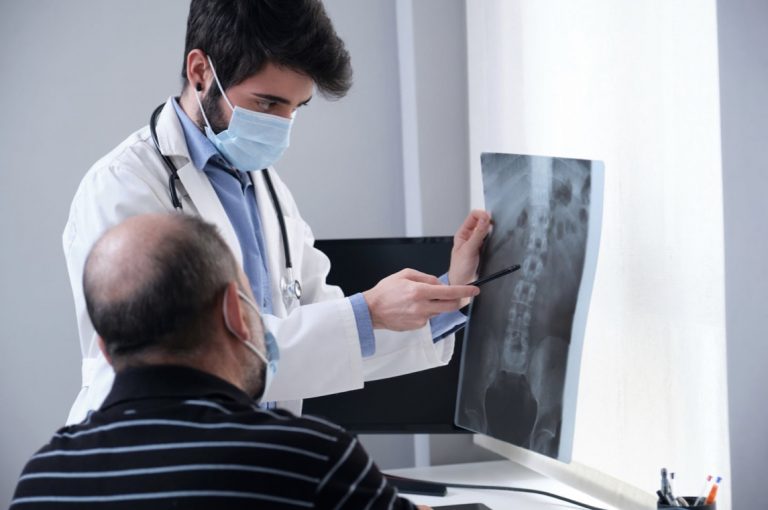Patients dealing with chronic neck or back pain face numerous obstacles to achieving relief. In addition to the pain itself, mobility problems can also severely limit your ability to accomplish basic tasks. For many, the underlying cause is an age-related spine condition that reduces spinal stability and increases the risk of nerve compression.
Spinal fusion surgery is a treatment that many patients turn to that is designed to increase spinal function, often through the use of a bone graft and surgical hardware. Since a large number of people have questions about what bone grafts are and the role they play in spinal fusion, we are sharing this helpful overview.
If you have any questions or would like to learn more about the treatments we offer at BEST Health System, contact our team today.
What is Spinal Fusion Surgery?
Spinal fusion is a type of procedure that involves removing damaged spinal anatomy, particularly degenerative spinal discs, and replacing them with material designed to stabilize the spine. The spine consists of a stack of vertebral segments connected by joints and cushioned by rubbery discs.
Due to aging, these discs break down which can cause instability that limits mobility and contributes to painful nerve compression. By fusion together two adjacent vertebrae segments, fusion surgery can stabilize the area even though it does reduce some flexibility.
One of the most common approaches to fusion involves placing a bone graft between the two vertebral segments where the disc was previously. The bone, which can come from either the patient or a donor source, works to stimulate bone growth that fuses the spinal segments together. Hardware, including a metal cage and screws, acts to hold the vertebral segments in place and provide additional stability while they fuse together.
When to Consider Spinal Fusion with Bone Graft
A patient will generally become candidates for spinal fusion surgery if they have severe neck or back pain related to a spine condition that does not respond to conservative therapies. Spinal fusion will be recommended over other types of surgery, such as decompression when there is significant instability and another spinal anatomy.
Patients should expect to undergo a thorough medical screening and physical evaluation to determine if surgery, including spinal fusion, is the appropriate course of treatment.
Types of Bone Graft
There are two primary types of bone graft that are used in spinal fusion surgery:
- Autograft – This type of bone graft comes from the patient themself. Common sources include the pelvis, legs, and other parts of the spinal column.
- Allograft – This is a bone graft material that is donated from another source, typically a cadaver.
The specific type of graft your procedure involves depends on the type of fusion, location on the spinal column, and preference of your surgeon.
Minimally Invasive Spinal Fusion
Traditional approaches to spinal fusion involved a large incision, significant soft tissue disruption, and overnight hospitalization followed by a long and often difficult recovery period. Thanks to the continued advancement of surgical techniques and new technology, surgeons can perform many types of spinal fusion using minimally invasive methods.
These procedures will often still use bone grafts and can even be performed on an outpatient basis at ambulatory surgery centers. You should always discuss the possibility of minimally invasive, outpatient spinal fusion with a prospective surgeon to determine if you’re a potential candidate.
Reach out to BEST Health System Today
If you’re dealing with chronic neck or back pain, you don’t have to just settle for a diminished quality of life. No matter where you are on your treatment journey, the caring and dedicated team at BEST Health System can help you develop a personalized treatment plan that fits your wellness goals and lifestyle.
Patients who have exhausted conservative therapies may be candidates for a minimally invasive fusion procedure performed at one of our state-of-the-art outpatient centers. Contact our team to learn more!
